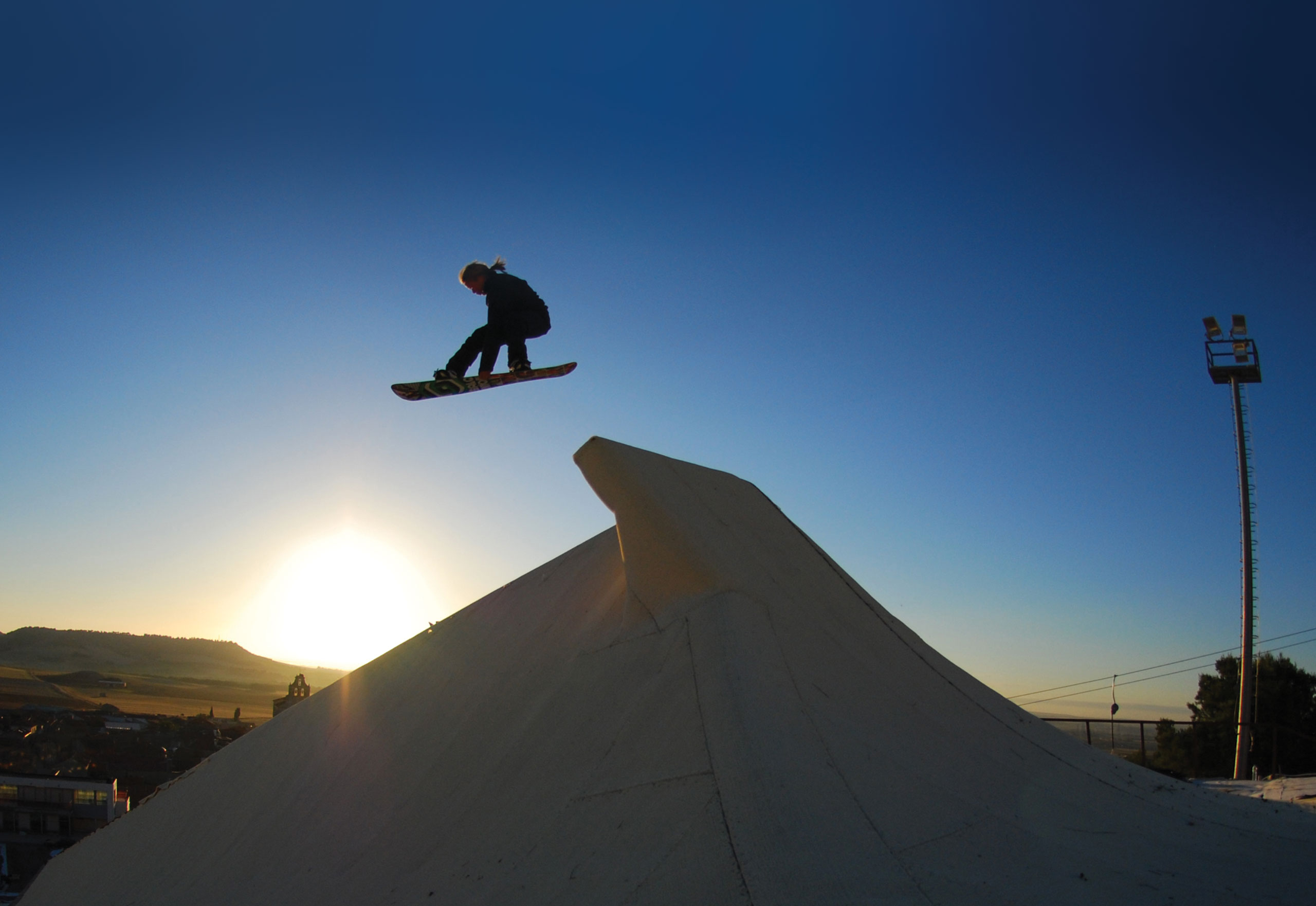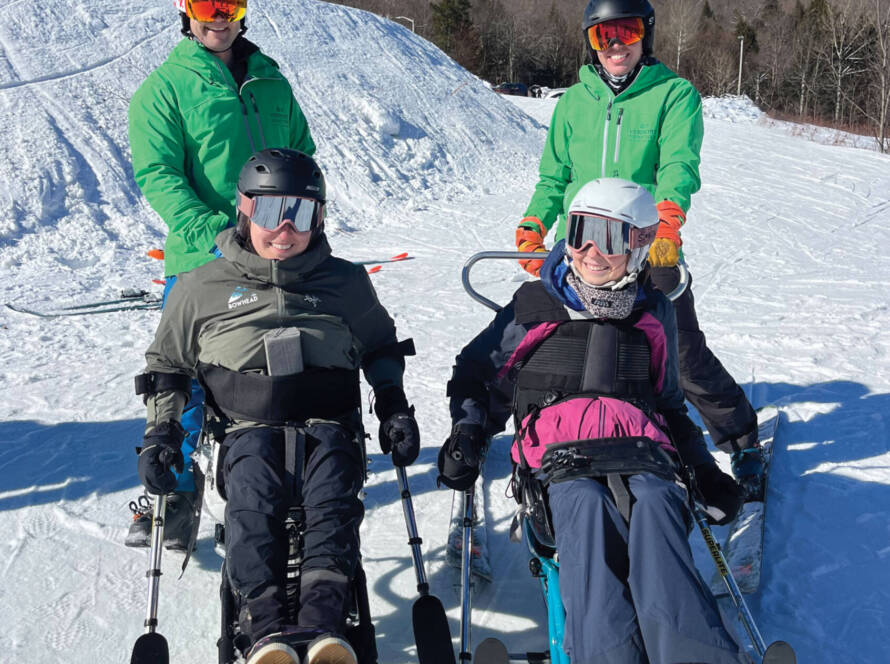Heading downhill on snow-laden mountains is second nature to skiers and snowboarders, but skiing downhill without snow is seemingly impossible. However, thanks to Snowflex, a revolutionary snowsports system that provides a foundation for snowsports activities anywhere, anytime, no matter the weather outside, snow enthusiasts can get the same excitement without snow.
Snowflex is a homogeneous polymer composite with a high-tech sliding layer suspended over a shock-absorption layer. It is manufactured on a production line specially designed and developed by Briton Engineering Developments Ltd. in Yorkshire, England.
“The top sliding component is a sophisticated [polybutylene terephthalate polymer] drawn monofilament fiber. This is secured by a polypropylene matrix bonded by a polyurethane elastomer. This layer sits on top of a two-inch shock pad on top of an impermeable layer,” said Brian Thomas, Briton’s managing director and inventor of Snowflex. “The shock pad layer incorporates the pipes delivering water to specially-designed nozzle carriers. The lubrication nozzles spray fine [water droplets], creating maximum lubrication for minimum water. The impermeable layer collects the water for recycling.”
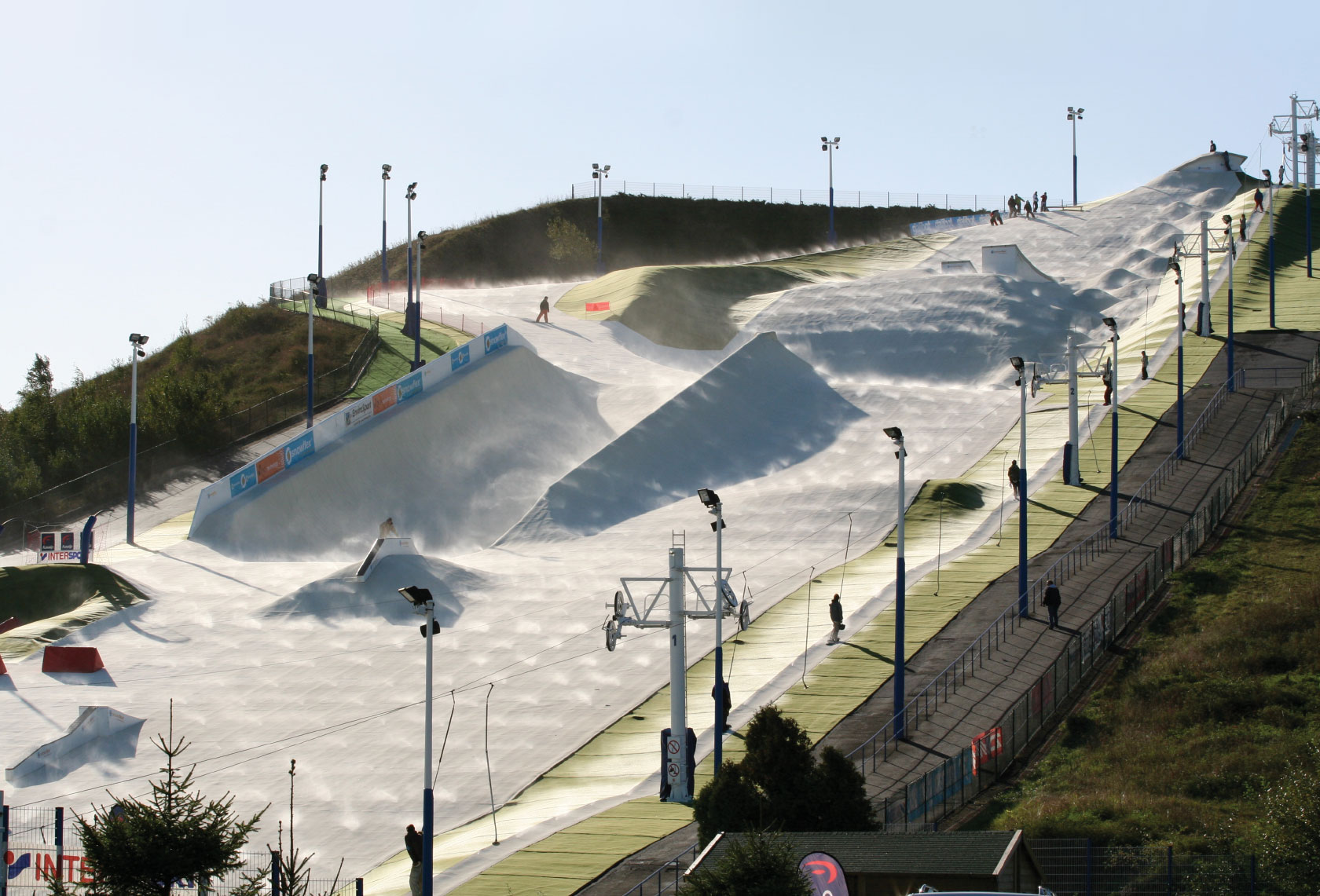
Every project the company undertakes is carefully designed to cover all skill levels, from nervous novices to extreme experts. Thomas says Snowflex is easier to learn on because it is soft to fall on and contains consistent materials rather than the rock-hard, uneven surfaces of hills and other slopes.
Artificial slopes date back to the early 1960s in the United Kingdom and were soon popular in Belgium, Holland and several other countries. At that time, most surfaces were molded plastics, and over the years, the concept has been re-invented with new materials. In the 1970s, the brush mesh surface was the most successful, replacing the molded ones – despite being twice the cost – because of the better edge response achieved using drawn monofilament fiber.
“It was clear that dry slopes were a much better experience when wet, so BritonMist was developed. [It] used fine droplets of water to keep the surface wet, thus making it a lot more fun.”
Brian Thomas, Briton Engineering Developments Ltd.
Although Thomas invented Snowflex, it wasn’t his first invention in the winter sports field. During the late 1970s, he thought there might be a market for a portable ski lift to use on the Pennine Hills in northern England. Using his skills as a mechanical engineer, he created the Britonlift Portable Ski Lift and launched it at the 1979 Daily Mail International Ski Show held at Earl’s Court in London.
The lift was immediately popular and was featured in several ski magazines and on television shows such as “Tomorrow’s Word” and “Look North.” He sold the lift to ski clubs, outdoor facility organizations, the military and individuals. It was even used at the 1992 Winter Olympics in Albertville, France, and the 1998 Winter Olympics in Nagano, Japan, to transport freestyle skiers back to the top of their jumps.
The dry slope industry
The ski lift introduced the company to the dry slope industry, prompting the idea of developing other lifts, such as the QueueDodger fiber rope drag and Briton Button steel rope lift with towing buttons. Briton was then named the U.K.’s representative for Doppelmayr, a global aerial lift manufacturer, and became the builder for the U.K.’s newest mountain ski area, Nevis Range.
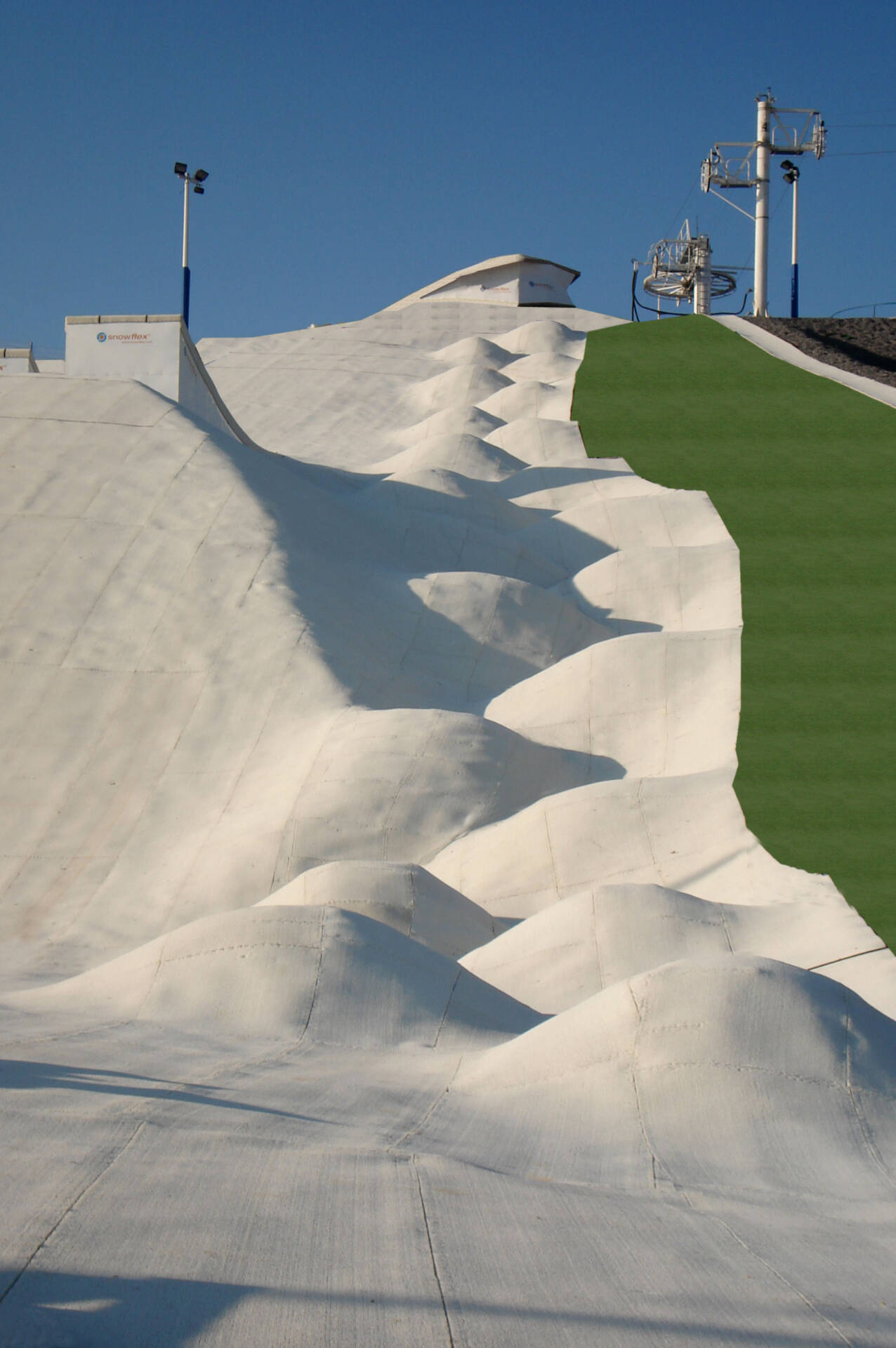
“It was clear that dry slopes were a much better experience when wet, so BritonMist was developed. [It] used fine droplets of water to keep the surface wet, thus making it a lot more fun,” said Thomas. “This led to the discovery that little design or engineering had been applied to dry slopes, so design and build projects became the aim, culminating in the biggest and best project, which was in Denmark.”
The Danish experience convinced the company that dry slope surfaces needed improvement, and skiers had to learn how to use these surfaces to avoid injury. Thomas tackled this issue with support from the U.K. Department of Trade and Industry, which led to the creation of Snowflex.
The company embarked on projects around the U.K., which promoted very rapid skill development in freestyle snowboarders and skiers – some of whom became Olympic athletes in 2014 and 2018.
The new invention was featured on the BBC children’s program “Blue Peter” in 1996, and it rapidly gained prominence. Soon, the company embarked on projects around the U.K., which promoted very rapid skill development in freestyle snowboarders and skiers – some of whom became Olympic athletes in 2014 and 2018. Since then, the company has expanded into other countries, including France, Spain, Lebanon, Türkiye, China, and the U.S.
Unique projects
Although each project is unique and takes three months to over a year to complete, the installation process is similar. The projects range from indoor slopes, specialist freestyle facilities, large-scale permanent facilities and temporary exhibition slopes.
“The level of expectation and enjoyment from the new generation of [winter athletes] has pushed out the boundaries,” said Thomas. “The increasing demand for improved facilities has signaled a change in expectations – people want easier access to their sport, and the ability to move [winter sports] from the mountains to an urban environment has been termed by some as a new sport.”
The ground preparation begins after the site is designed and the terrain is shaped. Then, specialists install layers of Snowflex and the mist system with its pumps, valves and filtration.
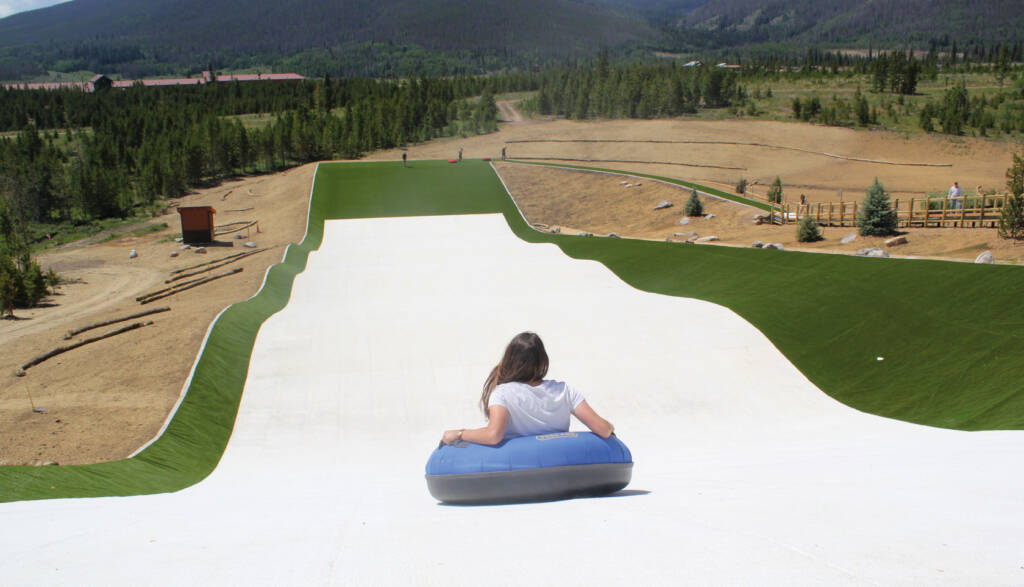
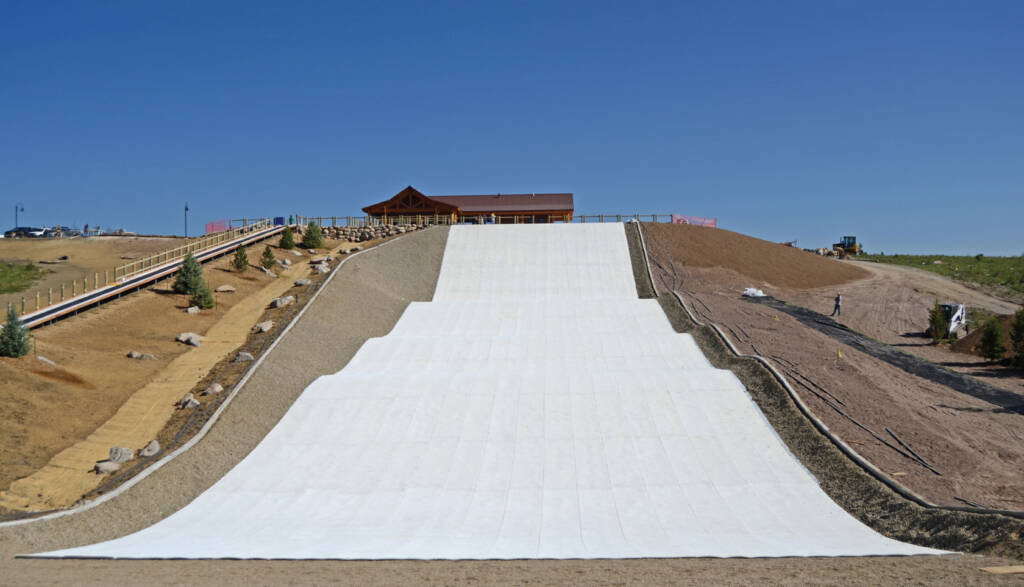
“Apart from cleaning, little maintenance is required for three to five years according to the amount of activity,” said Thomas. “It is recommended that around 30 cents per ticket hour be put into an escrow account to cover future [surface replacement] starting with the high wear areas.”
Although there are other products on the market, Thomas says that Snowflex is the first surface to be designed on a clean sheet basis and is not a byproduct of the molding, brush or carpet industries. The company focused on what was required to create the solution. He says the system has many benefits, but for the user, it is softer to fall on than hard-packed snow, available all year without extensive traveling, a lot of fun and very pleasant.
“Over the last 40 years, there have been as many as 50 ski surfaces, all born as a byproduct of other industries. Briton Engineering Developments is the only company to invent [a system] completely, which for the first time, truly simulates and creates the thrill of real snow.”

